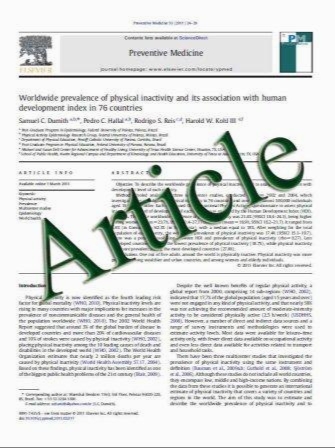Risedronate in adults with osteogenesis imperfecta type I: increased bone mineral density and decreased bone turnover, but high fracture rate persists
- نوع فایل : کتاب
- زبان : انگلیسی
- مؤلف : L. A. Bradbury & S. Barlow & F. Geoghegan & R. A. Hannon & S. L. Stuckey & J. A. H. Wass & R. G. G. Russell & M. A. Brown & E. L. Duncan
- چاپ و سال / کشور: 2011
Description
Summary Bisphosphonates can increase bone mineral density (BMD) in children with osteogenesis imperfecta (OI). In this study of adults with OI type I, risedronate increased BMD at lumbar spine (but not total hip) and decreased bone turnover. However, the fracture rate in these patients remained high. Introduction Intravenous bisphosphonates given to children with OI can increase BMD and reduce fracture incidence. Oral and/or intravenous bisphosphonates may have similar effects in adults with OI. We completed an observational study of the effect of risedronate in adults with OI type I. Methods Thirty-two adults (mean age, 39 years) with OI type I were treated with risedronate (total dose, 35 mg weekly) for 24 months. Primary outcome measures were BMD changes at lumbar spine (LS) and total hip (TH). Secondary outcome measures were fracture incidence, bone pain, and change in bone turnover markers (serum procollagen type I aminopropeptide (P1NP) and bone ALP). A meta-analysis of published studies of oral bisphosphonates in adults and children with OI was performed. Results Twenty-seven participants (ten males and seventeen females) completed the study. BMD increased at LS by 3.9% (0.815 vs. 0.846 g/cm2, p=0.007; mean Z-score, -1.93 vs. -1.58, p=0.002), with no significant change at TH. P1NP fell by 37% (p=0.00041), with no significant change in bone ALP (p=0.15). Bone pain did not change significantly (p= 0.6). Fracture incidence remained high, with 25 clinical fractures and 10 major fractures in fourteen participants (0.18 major fractures per person per year), with historical data of 0.12 fractures per person per year. The meta-analysis did not demonstrate a significant difference in fracture incidence in patients with OI treated with oral bisphosphonates. Conclusions Risedronate in adults with OI type I results in modest but significant increases in BMD at LS, and decreased bone turnover. However, this may be insufficient to make a clinically significant difference to fracture incidence.
Osteoporos Int DOI 10.1007/s00198-011-1658-2 Received: 13 December 2010 / Accepted: 21 April 2011


